
The Marathon Trilogy is a science fiction first-person shooter video game series from Bungie, originally released for the Classic Mac OS. The name of the series is derived from the giant interstellar colony ship that provides the main setting for the first game; the ship is constructed out of the Martian moon Deimos. The series is often regarded as a spiritual predecessor of Bungie's Halo series.
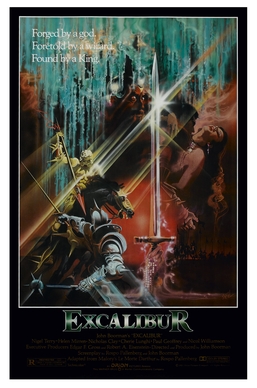
Excalibur is a 1981 epic medieval fantasy film directed, co-written and produced by John Boorman, that retells the legend of King Arthur and the knights of the Round Table, based loosely on the 15th-century Arthurian romance Le Morte d'Arthur by Thomas Malory. It stars Nigel Terry as Arthur, Nicol Williamson as Merlin, Nicholas Clay as Lancelot, Cherie Lunghi as Guenevere, Helen Mirren as Morgana, Liam Neeson as Gawain, Gabriel Byrne as Uther and Patrick Stewart as Leondegrance. The film is named after the legendary sword of King Arthur that features prominently in Arthurian literature. The film's soundtrack features the music of Richard Wagner and Carl Orff, along with an original score by Trevor Jones.

Halo: Combat Evolved is a 2001 first-person shooter video game developed by Bungie and published by Microsoft Game Studios for the Xbox. It was released as a launch game for Microsoft's Xbox video game console on November 15, 2001. The game was ported to Microsoft Windows and Mac OS X in 2003. It was later released as a downloadable Xbox Original for the Xbox 360. Halo is set in the twenty-sixth century, with the player assuming the role of the Master Chief, a cybernetically enhanced supersoldier. The Chief is accompanied by Cortana, an artificial intelligence. Players battle aliens as they attempt to uncover the secrets of the eponymous Halo, a ring-shaped artificial world.

The Excalibur automobile was a car styled after the 1928 Mercedes-Benz SSK by Brooks Stevens for Studebaker. Stevens subsequently formed a company to manufacture and market the cars, which were a standard Studebaker car with special bodywork.
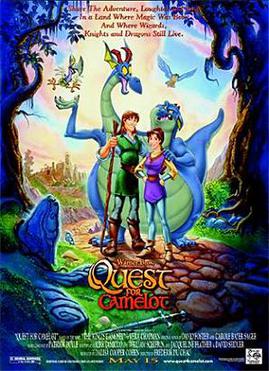
Quest for Camelot is a 1998 American animated musical fantasy film produced by Warner Bros. Feature Animation and directed by Frederik Du Chau and very loosely based on the 1976 novel The King's Damosel by Vera Chapman. It features the voices of Jessalyn Gilsig, Cary Elwes, Gary Oldman, Eric Idle, Don Rickles, Jaleel White, Jane Seymour, Pierce Brosnan, Gabriel Byrne, John Gielgud, Frank Welker, and Sarah Rayne. Andrea Corr, Bryan White, Celine Dion, and Steve Perry perform the singing voices for Gilsig, Elwes, Seymour, and Brosnan.

Merlin is a 1998 two-part television miniseries starring Sam Neill as Merlin, recounting the wizard's life in the mythic history of Britain. Loosely adapted from the legendary tales of Camelot, the plot adds the antagonistic Queen Mab and expands Merlin's backstory before the birth of King Arthur.

Shadows over Camelot is an Arthurian-themed board game designed by Serge Laget and Bruno Cathala, illustrated by Julien Delval and Cyrille Daujean. The game was unveiled by the publishers Days of Wonder at the 2005 American International Toy Fair and was more widely released in May and June 2005. The game was also published in French as Les Chevaliers de la Table Ronde and in German as Schatten über Camelot. In 2008, an expansion for Shadows over Camelot was released titled Merlin's Company.
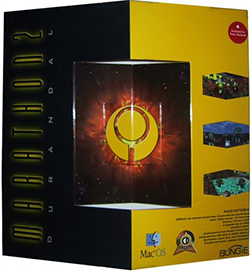
Marathon 2: Durandal is a first-person shooter video game, part of the science fiction Marathon Trilogy by Bungie. It was released on November 24, 1995. The game is mostly set on the fictional planet of Lh'owon, homeworld of the S'pht, and once again the player takes the role of a shipboard security officer from the Marathon. This is the only game in the series to be officially released for Windows and Xbox 360 XBLA in addition to the Mac. The unofficial Aleph One community enhancement, built on engine source opened by Bungie in 1999, allows the game to be played on many other platforms. The entire game including assets was released for free to the public by Bungie in 2005, now commonly bundled for distribution with Aleph One.
The Legend of Prince Valiant is an animated television series based on the Prince Valiant comic strip created by Hal Foster. Set in the time of King Arthur, it is a family-oriented adventure show about an exiled prince who goes on a quest to become one of the Knights of the Round Table. He begins his quest after having a dream about Camelot and its idealistic New Order. This television series originally aired on The Family Channel for a total run of 65 episodes.
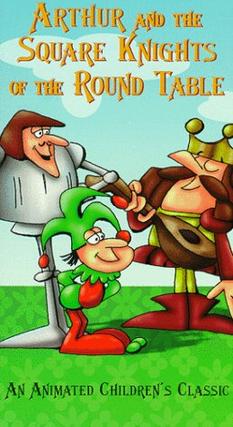
Arthur! And the Square Knights of the Round Table is a 1966-1968 Australian animated series based on the legend of King Arthur of Camelot.
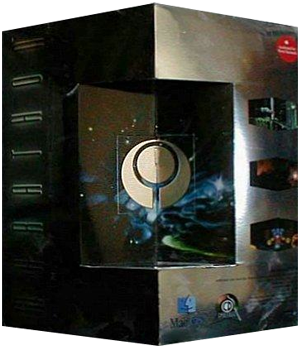
Marathon Infinity is a first-person shooter video game, the third in the science fiction Marathon Trilogy by Bungie. The game was released on October 15, 1996 and included more levels than its predecessor Marathon 2: Durandal. These levels were larger, and formed part of a more intricate plot. Marathon Infinity, unlike Marathon 2, was originally released only for the Apple Macintosh. However, Bungie released the source for Marathon 2 in 1999, allowing the development of the open-source multiplatform Aleph One engine that is also compatible with Infinity. In 2005, Bungie released the trilogy to the public as freeware, allowing the games to be freely downloaded. In 2011, Bungie released the source code for Marathon Infinity itself, preceding an official Aleph One-based port for iOS the next year that is available free.

Marathon is a first-person shooter video game developed and published by Bungie, and released in December 1994 for the Apple Macintosh. The game takes place several centuries into the future in outer space and sets the player as a security officer attempting to stop an alien invasion aboard a colony ship named the Marathon.
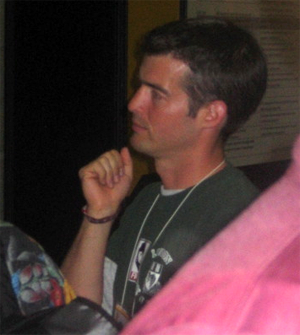
Jason Jones is an American video game developer and programmer who co-founded the video game studio Bungie with Alex Seropian in 1991. Jones began programming on Apple computers in high school, assembling a multiplayer game called Minotaur: The Labyrinths of Crete. While attending the University of Chicago, Jones met Seropian and the two formed a partnership to publish Minotaur.
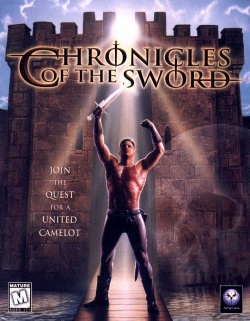
Chronicles of the Sword is an adventure game developed by Synthetic Dimensions and released by Psygnosis in 1996 for MS-DOS and Sony PlayStation platforms. The game, originally titled as King Arthur: The Quest of The Fair Unknown, is based on Arthurian legends and uses a point-and-click interface. Chronicles of the Sword tells the story of the young knight Gawain on a quest to save Camelot from the scheming witch queen Morgana. It has received largely negative reviews.
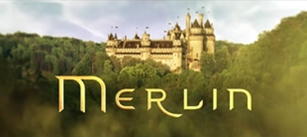
Merlin is a British fantasy-adventure drama television programme, loosely based on the Arthurian legends regarding the close relations of Merlin and King Arthur. Created by Julian Jones, Jake Michie, Johnny Capps and Julian Murphy for the BBC, it was broadcast for five series on BBC One between 20 September 2008 and 24 December 2012. The programme starred Colin Morgan, Bradley James, Katie McGrath, Angel Coulby, Richard Wilson, Anthony Head, and John Hurt.
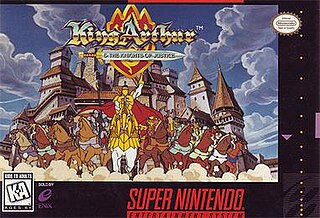
King Arthur & the Knights of Justice is an action-adventure game developed by Manley & Associates and published by Enix for the Super Nintendo Entertainment System in May 1995. Based on the cartoon series of the same title, which was loosely inspired by the Arthurian legend, the game was released in North America exclusively.
Bungie, Inc. is an American video game company based in Bellevue, Washington, and a subsidiary of Sony Interactive Entertainment. The company was established in May 1991 by Alex Seropian, who later brought in programmer Jason Jones after publishing Jones's game Minotaur: The Labyrinths of Crete. Originally based in Chicago, Illinois, the company concentrated on Macintosh games during its early years and created two successful video game franchises called Marathon and Myth. An offshoot studio, Bungie West, produced Oni, published in 2001 and owned by Take-Two Interactive, which held a 19.9% ownership stake at the time.
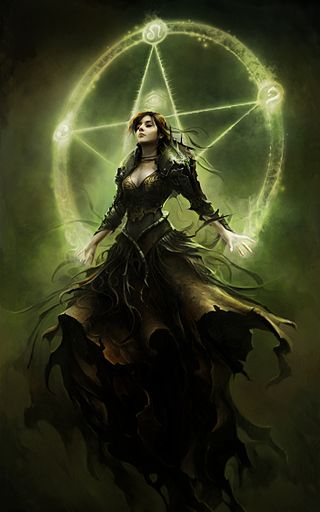
The Matter of Britain character Morgan le Fay has been featured many times in various works of modern culture, often but not always appearing in villainous roles. Some modern stories merge Morgana's character with her sister Morgause or with aspects of Nimue. Her manifestations and the roles given to her by modern authors vary greatly, but typically she is being portrayed as a villainess associated with Mordred.















